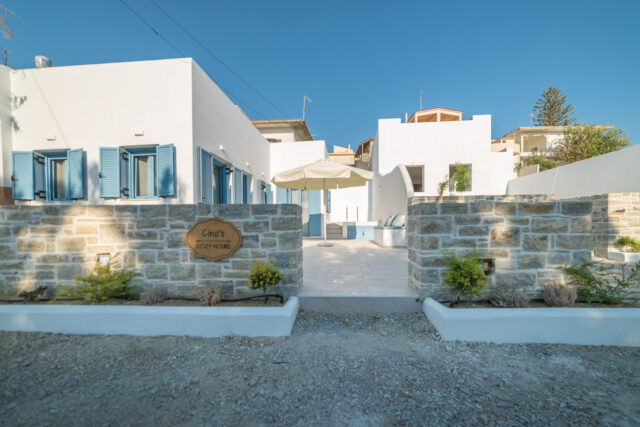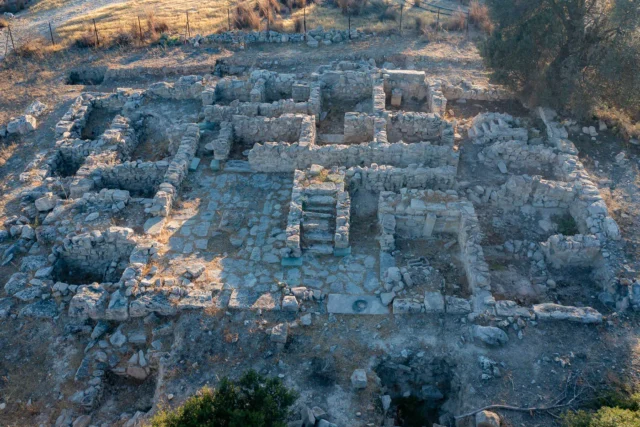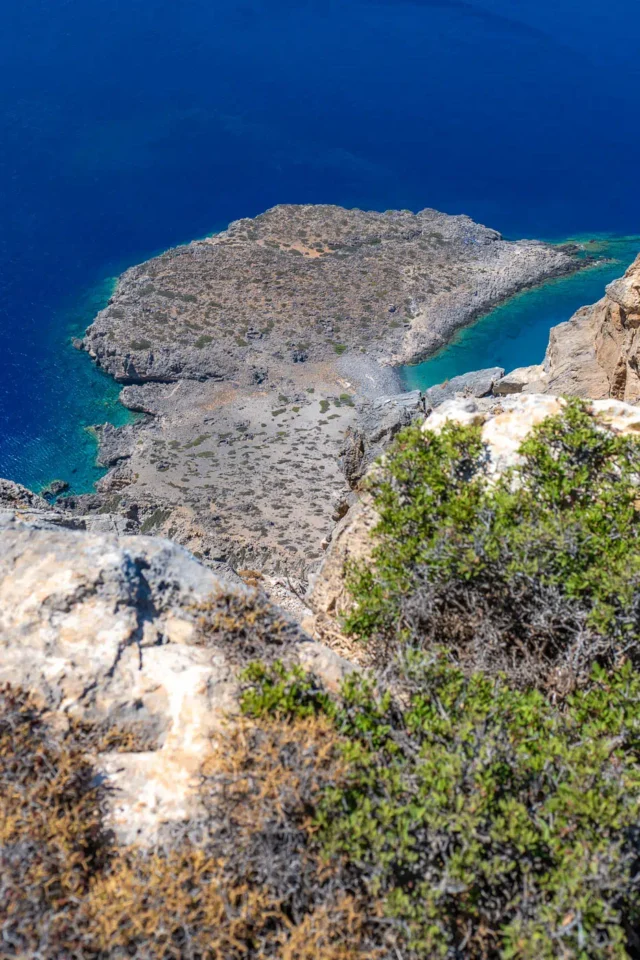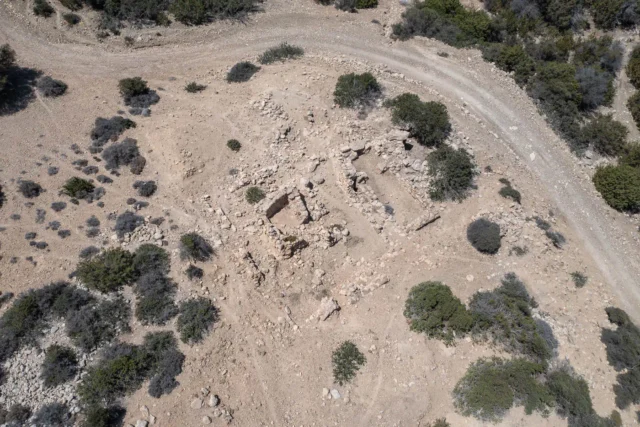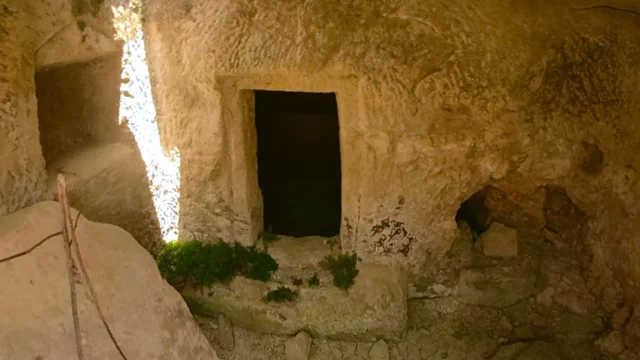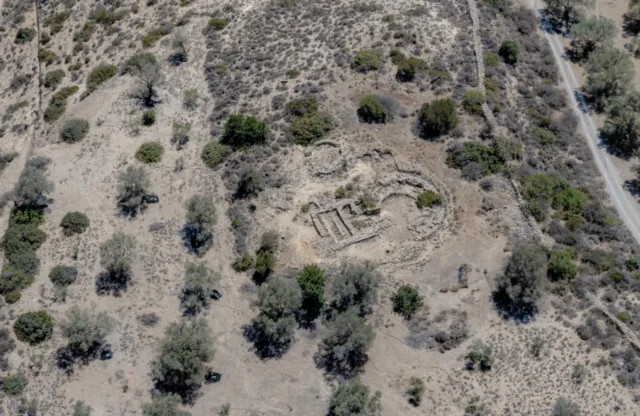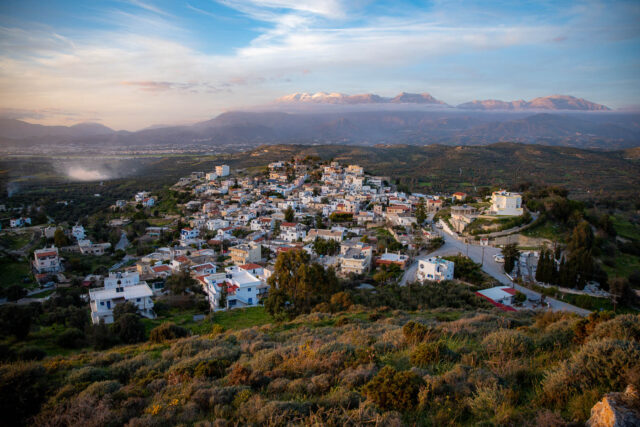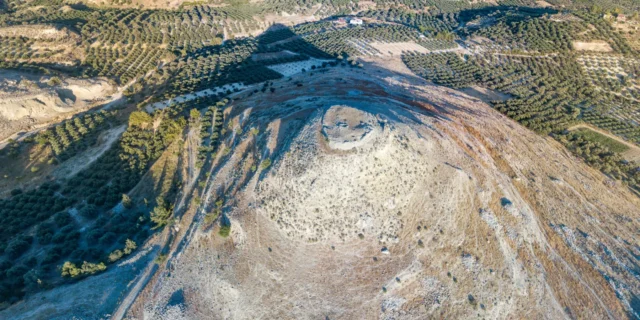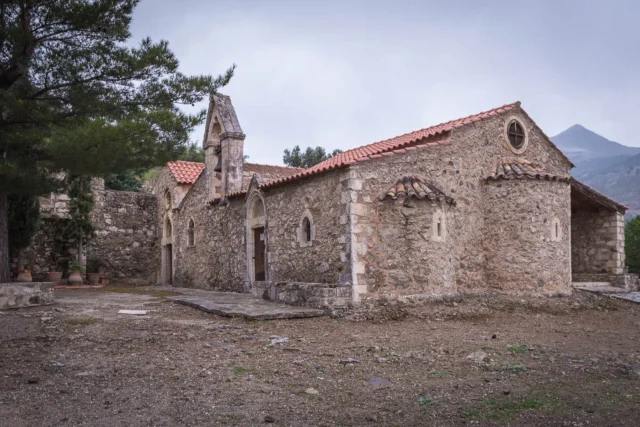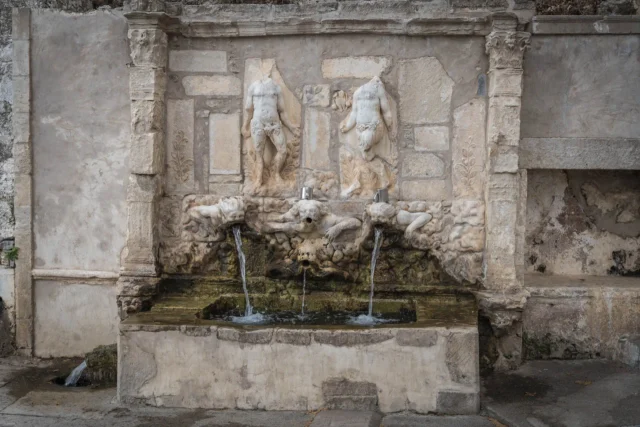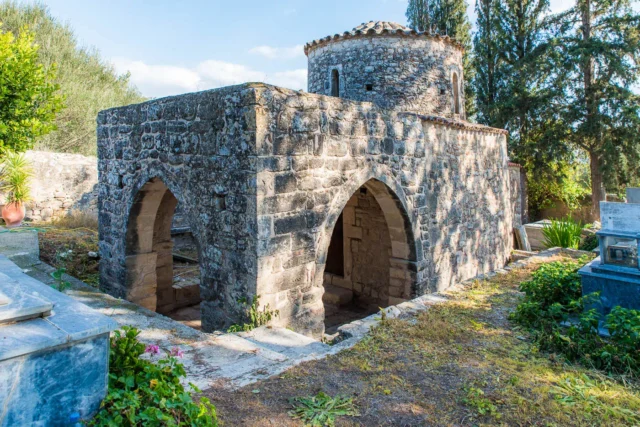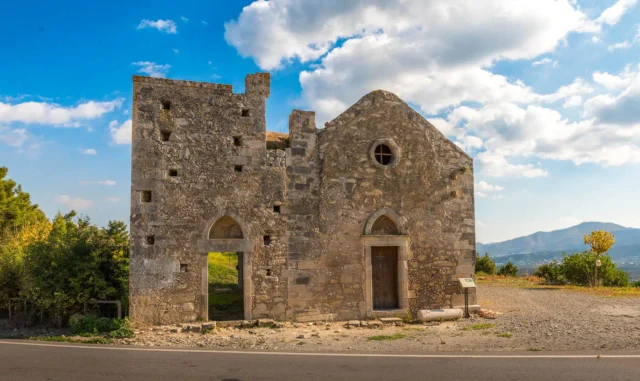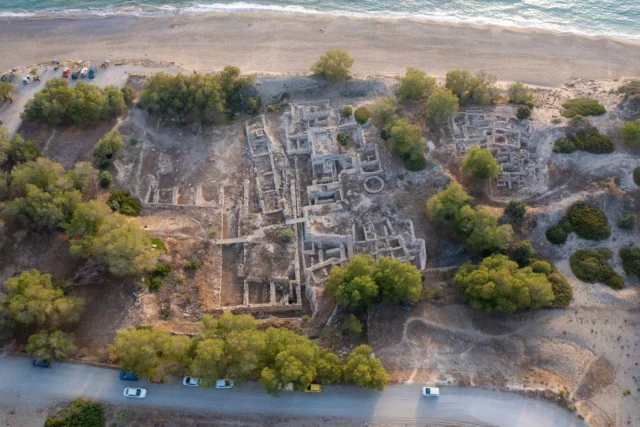86
listings found
Categories
Active filters:
Zaros, Phaistos
Zaros, a town in Crete's Heraklion region, sits on Mount Samari's slopes. Known for "Zaros" bottled water, it boasts Lake Votomos, a recreational area with trout farms, and the Gorge of Rouvas. The historic Monastery of Vrontisi and Saint Nicholas Church, featuring frescoes, are nearby. Ancient Gortyn sourced water from Zaros' Sterna spring, with Roman aqueduct remnants still visible. The 1583 Kastrofylakas census mentions Zaros. The town's economy is based on agriculture.
Metochi of Kamilari
Metochi, Crete, is known as the alleged birthplace of Epimenides, an ancient sage. The village holds historical significance with its agricultural roots and traditional architecture. Plutarch's writings link Epimenides to Metochi, sparking interest in his legendary life, including his famed 57-year slumber. The area features olive groves and ancient ruins, enhancing its historical allure. Beyond its Epimenides connection, Metochi offers Cretan cuisine and access to the Mesara Plain's natural beauty.
The Agriolidis Tower in Agios Ioannis
The Agriolidis Tower in Crete: A symbol of Ottoman oppression and Cretan resistance. Learn about the notorious Agriolidis and the tower's role in the struggle for independence.
Cozy houses
Two cozy houses with jacuzzi in Kamilari, with one bedroom, big yard and big living room and kitchen.
Pitsidia Minoan villa
Minoan villa ruins near Pitsidia, Crete, dating back to 1700-1450 BC. Insights into Minoan daily life, architecture, and earthquake response.
Lithino Cape, Kefali peak
Lithino Cape, the southernmost point of Crete, features a rugged landscape with cliffs and remnants of WWII German fortifications. The cape's strategic location, offering a commanding view of the southern coastline, led the Germans to construct these fortifications to defend against potential invasion. Mount Kefali, situated on the cape, rises to an elevation of 388 meters and offers stunning views of the coastline, Gavdos, and the Asterousia Mountains. Atop Kefali Peak stands the small stone church of Timios Stavros, a testament to the site's enduring importance as a place of worship and refuge. The ruins of pillboxes built by the Germans during the Second World War are a stark reminder of the cape’s strategic value.
Skaniari Lakkos
Skaniari Lakkos, a Minoan cemetery complex located in the Asterousia Mountains of southern Crete, provides valuable insights into Minoan burial practices and social organization during the Bronze Age. It features five distinct burial structures, including two tholos tombs and three rectangular buildings, each containing multiple chambers and showcasing a variety of architectural styles. These structures date back to the Final Neolithic period (c. 3500 BC) to the Middle Minoan IB period (c. 1900 BC). Excavations at Skaniari Lakkos have yielded a wealth of artifacts, including pottery vessels, stone tools, jewelry, and seals, providing information about Minoan material culture, artistic expression, and trade networks. The presence of imported goods suggests connections with other regions in the Aegean and beyond. The site's remote location and the monumental nature of the burial structures underscore the importance of death and the afterlife in Minoan society. Skaniari Lakkos is part of a broader network of Minoan settlements and burial sites in the Asterousia region, including Trypiti, Doukiania, and the tholos tombs of Kefali and Moni Odigitria.
Kamilari Roman graveyard
The Roman Tombs of Kamilari, located in southern Crete, are an archaeological site that offers a glimpse into the island's history during the Roman period. Discovered in 2010, the tombs are situated at the foot of Evgora Hill, close to Metochi Kamiliariou. The area was known locally as "Xospilios," possibly derived from the Greek word for cave ("spilaio"). The tombs are estimated to have been constructed around 50 AD, based on discovered coins, and provide valuable insights into Roman burial practices. The site is under the supervision of the Archaeological Service.
Kaloi Limenes Minoan tholos tomb
This tomb, a circular burial structure characteristic of the Minoan civilization, offers valuable insights into the burial practices, social structures, and cultural beliefs of the Bronze Age inhabitants of this […]
Minoan Archaeological Site at Odigitria Monastery
The Odigitria Cemetery in Crete's Asterousia mountains is an archaeological site dating back to the Early Minoan (EM) period.
It features two tholos tombs (A and B), a Rectangular Building, courtyards, an ossuary, and a possible altar, all enclosed within a peribolos wall. The site's three construction phases span from the Final Neolithic to the Middle Minoan (MM) era. Tholos A, the smaller of the two tombs, contained undisturbed EM I pottery, while Tholos B boasts a unique complete outer wall. The Rectangular Building may have served as an independent burial building or ritual space. The courtyards, particularly the Eastern and Outer Courtyards, likely hosted rituals associated with the deceased. The ossuary reveals the practice of secondary burial, where bodies were initially interred in the tholos tombs or pithoi and later transferred to the ossuary. The Odigitria Cemetery provides significant insights into Early and Middle Minoan burial practices, social structures, and material culture.
Panagia ton Angelon in Fradio
Panagia ton Angelon, a 15th-century Catholic church in Fradio, Crete. Gothic influences and monastery ruins mark this historic site.
Kamilari, Phaistos
Kamilari is a village in the Asterousia mountains of Crete. Its history dates back to the Minoan era. The village's name, first recorded in 1370, is likely derived from the Byzantine family name "Kamelaris" or the term "Hamilon Oros," meaning "Low Mountain."
Kamilari is archaeologically significant, with nearby sites like the Minoan palace of Phaistos and the Kamilari Tholos Tomb. The discovery of a bothros containing terracotta figures from the Geometric period confirms the area's long history of human presence.
The village's Cultural Association works to preserve local traditions and customs. Kamilari offers a unique experience for visitors to Crete.
Castel Nuovo (Kasteli Messara)
Castel Nuovo, a 1206 Genoese fortress, stands in ruins on Psilo Kasteli, near Phaistos, Crete. Constructed by Enrico Pescatore, its strategic hill location offered views of Messara. Built on the ancient Aina site, it played a role in Cretan revolts against Venetian rule, including the Two Syvritos (1230-1236) and Kallergis (1363-1367) revolts. The fortress, also briefly reoccupied during the Cretan War (1645-1669), is the namesake of Kainourgiou province. Today, wall and cistern remnants mark the historical landmark, offering insights into Venetian-era Crete.
Valsamonero monastery (Aghios Fanourios)
Explore the historic Varsamonero Monastery in Crete, known for its well-preserved 14th-15th century frescoes and connection to Saint Phanourios.
Vrontisi monastery
Moni Vrontisiou, a historic monastery in the Psiloritis Mountains of Crete, dates back to the 9th century. Dedicated to Saint Anthony and the Touching of Thomas, it is known for its architecture and frescoes. The monastery played a role in the Cretan struggle for independence, serving as a refuge for monks and a hub for revolutionary activities. Its fortified walls, two-story main building, and bell tower stand as a testament to its history. The 15th-century marble fountain at the entrance is a highlight, featuring intricate carvings. The main church houses surviving frescoes from the 14th century. Moni Vrontisiou is located 49 kilometers southwest of Heraklion and is open daily from 8:00 AM to 5:00 PM with free admission.
Aghios Pavlos (Saint Paul)
The Church of Saint Paul, a 13th-century Byzantine church near Kamilari, Crete, features a large narthex and frescoes.
Aghios Georgios Falandras
Venetian-era monastery destroyed in 1821. Its history intertwines with Crete's religious traditions and fight for Greek independence.
Kommos archaeological site
Located on Crete's south coast, this site was a major Minoan harbor town for Phaistos and later a Greek sanctuary. It features monumental Minoan structures like Building T, shipsheds (Building P), and the significant residence House X. During the Greek and Roman periods, successive temples (A, B, C) were built over Minoan ruins. Finds of imported pottery from Egypt and Cyprus confirm its role as a trade hub. Abandoned in the Roman era, it is now a protected archaeological site.
Monumental Olive Tree of Paliama
Ancient olive tree near Moroni, Crete, designated "Monumental" with unique trunk and historical significance.
Koules in Magarikari
The Koules of Grammeni, also known as the Koules of Grigoria or Magarikari, is an Ottoman fortress in Crete, Greece. Built in the late 19th century during the Great Cretan Revolution (1866-1869), it was strategically positioned between the villages of Grigoria and Magarikari overlooking the Messara Plain. Measuring 25 meters by 11 meters, with 24 embrasures, it was used as a stronghold by the Ottomans to maintain control over the rebellious Cretan population. In May 1944, it provided refuge to the villagers of Magarikari during the German occupation. Today, the Koules of Grammeni stands as a well-preserved reminder of Crete's turbulent past and the island's enduring spirit.












